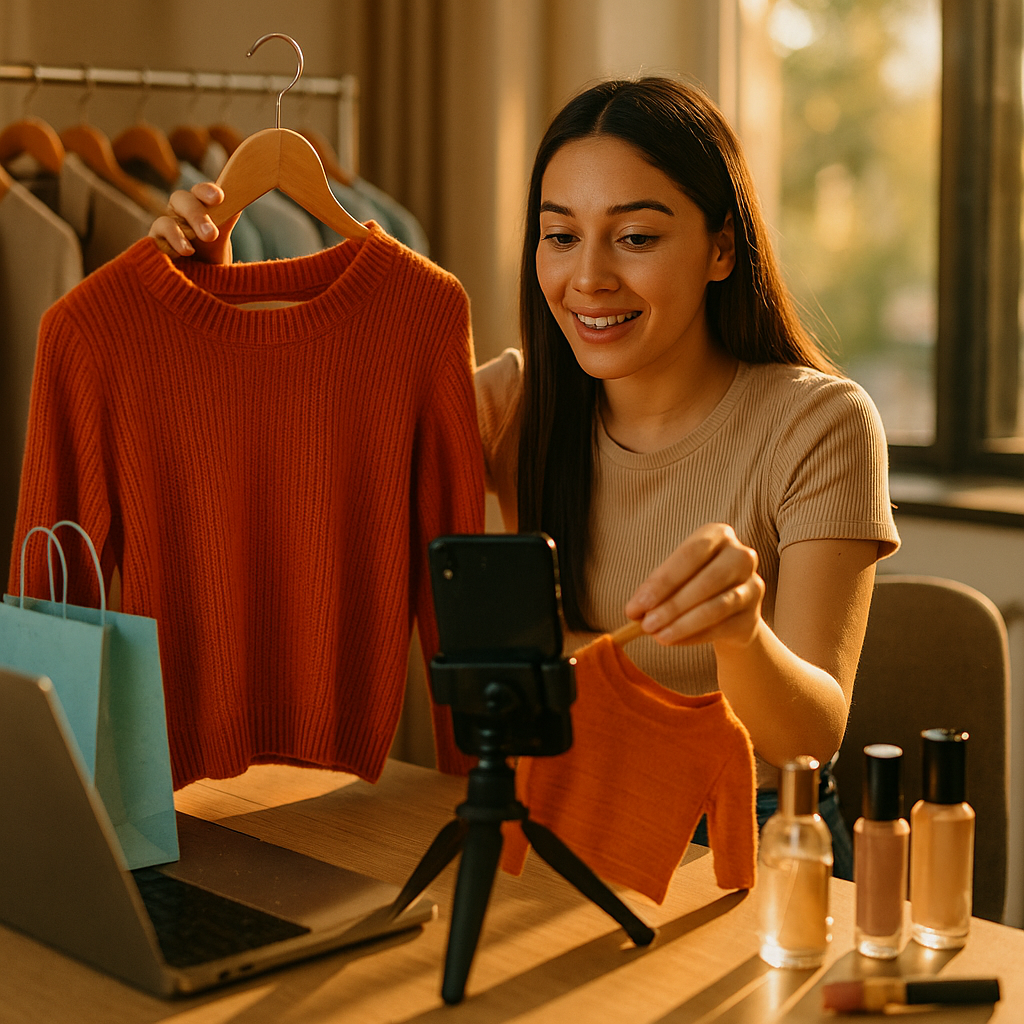Creators leading the social commerce boom are transforming online shopping into an engaging, interactive experience. Fueled by innovative content and authentic connections with their audiences, these digital entrepreneurs shape product trends and drive sales like never before. Discover how influencers are rewriting retail rules and what it means for consumers and brands in an era of social-driven commerce.
The Rise of Social Commerce: Influencers as Shopping Catalysts
In 2025, social commerce has evolved from a buzzword to a robust marketplace, projected to account for a significant share of global e-commerce sales. Influencers have become the engine of this boom, acting as both curators and endorsers. Their ability to craft relatable stories around products turns passive browsing into active purchasing, especially among Gen Z and Millennials eager for authenticity.
The unique value creators bring blends trustworthiness with entertainment. Instead of generic ads, shoppers get real-life demonstrations, honest reviews, and unfiltered feedback. These personal endorsements break down barriers of skepticism, making influencers critical in nudging consumers toward purchase decisions. As platforms like Instagram, TikTok, and YouTube introduce integrated shopping tools, influencers seamlessly guide their followers from inspiration to checkout in a few taps.
Building Trust Through Authentic Content: The Influencer Edge
The secret sauce behind creators leading the social commerce boom is credibility. Unlike traditional celebrities, digital creators live and interact among their followers daily, sharing behind-the-scenes glimpses and responding to questions in real time. This transparency fosters a level of trust that brands alone struggle to achieve.
Consumers in 2025 demand more than glossy product images—they want firsthand experiences. Influencers deliver, unboxing products in live streams, offering tutorials, and sharing genuine pros and cons. This peer-to-peer credibility not only humanizes brands but also accelerates buying decisions. A recent survey by Influencer Marketing Hub found that 79% of followers are more likely to buy from a brand showcased by a creator they trust.
Interactive Shopping Experiences: Turning Viewers Into Buyers
Interactivity is the cornerstone of modern social commerce. Live shopping events, shoppable stories, and comment-driven Q&A sessions position influencers as personal shoppers for their audiences. Platforms such as TikTok Shop and Instagram Live Shopping empower creators to connect products directly with audience questions, bridging information gaps instantly.
These sessions go beyond sales pitches; viewers can request real-time demonstrations, learn about product variants, or watch head-to-head comparisons. Gamified elements—like live poll voting or limited-time offers during broadcasts—increase engagement and urgency. Such interactive content leads to stronger emotional connections and higher conversion rates, as audiences feel seen, heard, and valued.
Broader Impact: Redefining Brand-Consumer Relationships
With creators leading the charge, brands are reimagining how they reach and retain customers. Instead of dictating marketing messages, forward-thinking businesses empower creators to co-create campaigns and even design product lines. This collaborative approach results in content that resonates organically with niche communities and builds enduring loyalty.
Additionally, creators open doors to micro-audiences—highly engaged, specific interest groups that brands might otherwise miss. Through data-driven insights, influencers tailor messaging, discounts, and launch events for each segment. Brands see this reflected in higher lifetime value and stronger advocacy, as creator-led recommendations are often shared and reshared across networks.
Challenges and Opportunities: Navigating the Social Commerce Landscape
While the benefits of creator-driven social commerce are clear, challenges remain. Over-saturation and potential authenticity fatigue can threaten audience trust if creators endorse too many products or appear inauthentic. Creators and brands must prioritize transparency, choosing partnerships aligned with genuine interests and values.
On the opportunity front, the technology ecosystem supporting social commerce is expanding rapidly. Advanced analytics equip creators with actionable insights, allowing them to refine strategies and optimize content for peak performance. Creative freedom is also increasing, with AR try-ons, VR shopping environments, and AI-powered personalization enhancing the consumer journey. Those who blend storytelling with emerging tech will stay ahead in this highly competitive space.
The Future of Social Commerce: Creators as Business Powerhouses
The role of creators in social commerce will only deepen. Already, we see the rise of the “solopreneur influencer,” capable of launching brands, hosting product lines, and managing entire sales operations independently. In 2025, creators are not just marketing partners—they are full-fledged business ecosystems, leveraging affiliate sales, subscriptions, exclusive communities, and merchandise.
For consumers, this means a richer, more personalized shopping journey curated by creators who understand and anticipate their needs. For brands willing to collaborate and innovate, the social commerce boom provides unprecedented avenues for engagement and growth—driven by the authentic voices that consumers trust most.
In summary, creators leading the social commerce boom are transforming the way consumers shop and brands sell. Their blend of authenticity, interactivity, and business acumen makes them indispensable shapers of the digital marketplace. To stay ahead, both shoppers and businesses should embrace this creator-driven evolution.
FAQs: Creators Leading The Social Commerce Boom
-
Why are creators so effective at driving social commerce?
Creators connect with their audiences through engaging, honest content. Their trustworthiness, real-life product endorsements, and interactive engagement drive higher conversion rates compared to traditional advertising.
-
What platforms are best for social commerce in 2025?
TikTok Shop, Instagram, and YouTube provide robust tools for influencer-led product discovery and seamless purchases. Many creators also leverage emerging shopping features on Snapchat and Pinterest.
-
How do influencers maintain trust while working with brands?
The most successful creators prioritize authentic partnerships, only endorsing products they genuinely believe in. Transparency and honest feedback are key to maintaining follower trust over time.
-
What are some challenges in influencer-driven social commerce?
Potential pitfalls include over-promotion, which can fatigue audiences, and competition from a crowded creator landscape. Adhering to authenticity and clear disclosures helps mitigate these risks.
-
Can small businesses benefit from collaborating with creators?
Absolutely. Micro- and nano-influencers can offer targeted visibility and genuine endorsements, helping small businesses reach engaged niche audiences cost-effectively.
